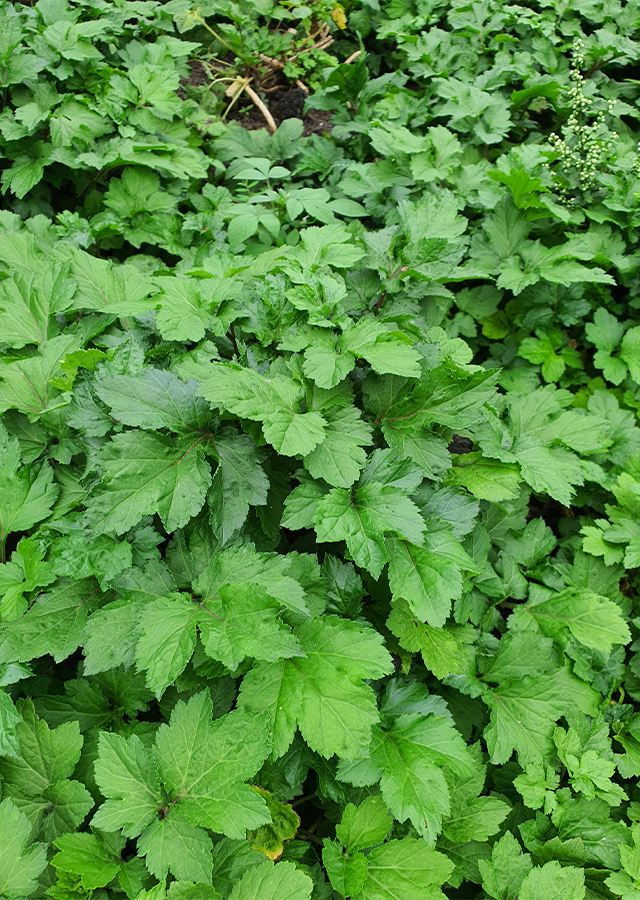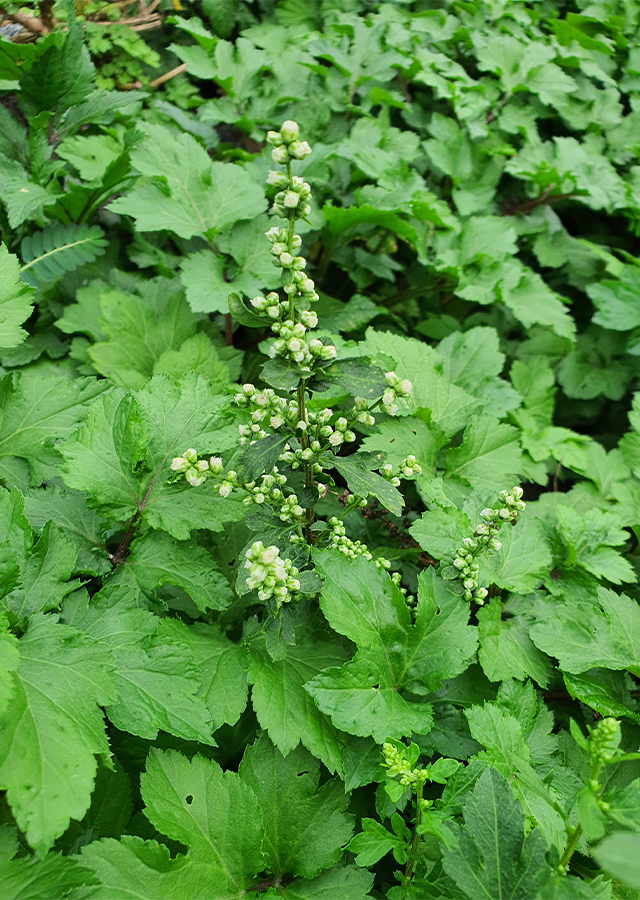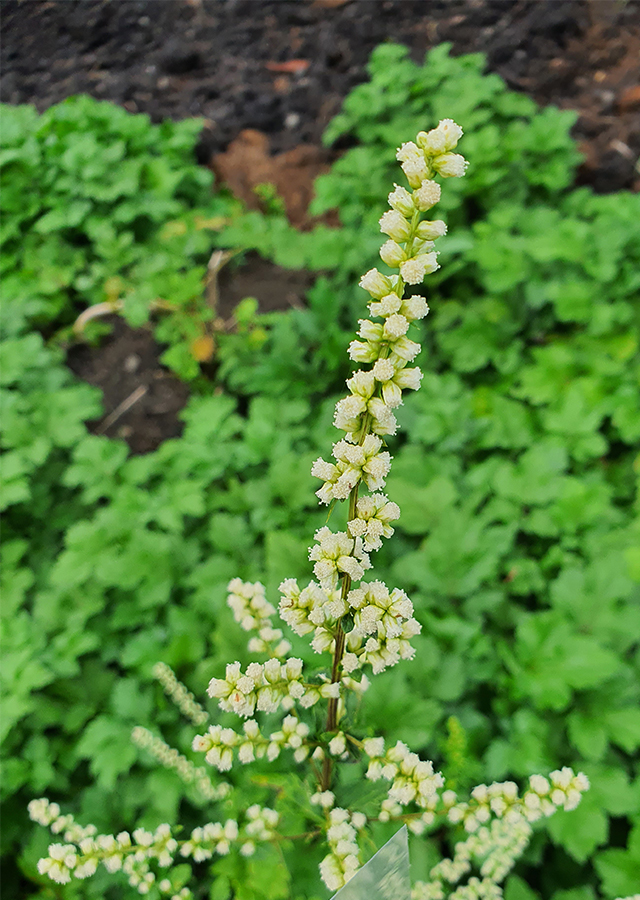White Mugwort
Artemisia lactiflora Wall. ex DC.
Asteraceae
Location in our garden
Principal



Synonym
Artemisia lactiflora f. henryana Pamp.
Artemisia lactiflora f. septemlobata (H.Lév. & Vaniot) Pamp.
Artemisia septemlobata H.Lév. & Vaniot
Habitus
Herbaceous. A perennial plant growing up to 1.5 m at a slow rate.
Part Used
Leaves
Twigs
Growing Requirements
Full Sunshine
Need Shade
Drought Resistant
Habitat
Riverbanks
Forest
Roadside
Shrublands
Overview
In the late of 19th century, in China, the great plant collector Ernest Wilson discovered white mugwort, the only perennial artemisia cultivated for its flowers. From the temperate regions of China (where it can undergo harsh frosts) to the tropical regions of Indo-China and Malaysia, it has a wide natural range. For local use as medicine, the plant is harvested from the wild. It is cultivated as a culinary herb and grown in gardens as an ornamental herb.
Vernacular Names
Artémise (French), Ajenjo blanco (Spanish), Weisser China-Beifuss (German).
Agroecology
Easily grown in a neutral circum or slightly acid-loamy soil that is well-drained, preferring a sunny location and a soil that retains moisture. Plants are light shade tolerant. White mugwort, when grown in poor dry soil, is longer lived, hardier and more aromatic.
Morphology
- Stems - tall straight ,strong and do not require staking, deep maroon and purple-maroon infused leaves.
- Flowers - cream, white in summer.
- Foliage - dark-green in spring; dark-green in summer; dark-green in autumn.
Cultivation
- Propagated generatively by seeds
- Propagated vegetatively by division or semi-hardwood cuttings in late summer.
Chemical Constituents
7-hydroxycoumarin , 7-methoxycoumarin , balanophonin, aurantiamide, aurantiamideacetate, isovitexin, kaempferol-3-O-beta-D-rutinoside, rutin, caffeic acid ethyl ester, quercetin, methyl 3, 5-di-O-caffeoyl quinate, methyl 3, 4-di-O-caffeoyl quinate.
Traditional Medicinal Uses
- White mugwort is a tonic herb with a bitter fragrance.
- In traditional Chinese medicine, the leaves and flowering stems are used internally for treating menstrual and liver disorders.
Part Used
Reference Sources
- de Padua, L.S., Bunyapraphatsara, N, Lemmens, R.H.M.J., eds. (1999). Plant Resources of South-East Asia, No. 12(1) - Medicinal and poisonous plants 1. Backhuys Publishers, Leiden.
- Lin, Y., Humphries, C.J., Gilbert, M.G. (2011). In: Shi, Z., Chen, Y., Chen, Y., Lin, Y., Liu, S., Ge, Z. et al. eds. Asteraceae (Compositae) - Flora of China 20-21: 717.

